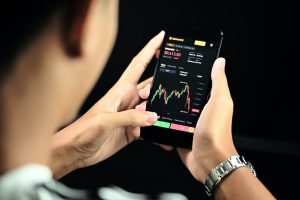The foreign exchange market, or forex, is the largest and most liquid financial market in the world. With daily trading volumes exceeding $6 trillion, it dwarfs other financial markets such as stocks and bonds. But how did forex evolve to become the global powerhouse it is today? In this article, we will take a look at the history and evolution of forex, from its humble beginnings to the modern electronic trading platforms.
The origins of forex can be traced back to ancient times when civilizations began to trade with one another. As early as the Babylonian era, people were exchanging goods and currencies across different regions. However, it was during the Middle Ages that the first formal currency exchange systems began to emerge.
In the 12th century, Italian merchants established the first foreign exchange banks in order to facilitate trade between different currencies. These banks acted as intermediaries, allowing traders to exchange one currency for another at a fixed rate. This system laid the foundation for modern forex trading, albeit on a much smaller scale.
Fast forward to the 19th century, and the advent of the gold standard brought about significant changes in the forex market. Under the gold standard, currencies were pegged to a fixed amount of gold, ensuring stability in exchange rates. This system allowed for the free convertibility of currencies, setting the stage for international trade and investment.
However, the gold standard eventually collapsed during the Great Depression in the 1930s. Countries abandoned the gold standard in favor of floating exchange rates, which fluctuate based on market forces of supply and demand. This shift marked a turning point in the evolution of forex, as it introduced volatility and speculation into the market.
The next major milestone in forex history came in the 1970s, with the introduction of electronic trading platforms. Prior to this, forex trading was conducted over the phone or through physical exchanges. The advent of computers and telecommunication networks revolutionized the industry, allowing traders to execute trades electronically and in real-time.
The 1980s saw the rise of interbank forex trading, where large financial institutions began trading directly with one another. This enabled faster execution of trades and tighter spreads, making forex more accessible and efficient. Around the same time, the emergence of financial derivatives, such as currency futures and options, further expanded the forex market.
The 1990s witnessed another leap forward in forex technology with the rise of the internet. Online forex trading platforms began to emerge, allowing individual traders to participate in the market from the comfort of their own homes. This democratization of forex trading opened up new opportunities for retail investors and led to a surge in market participation.
Today, the forex market is dominated by electronic trading platforms, where traders can access real-time quotes, charts, and news feeds. These platforms offer a wide range of tools and features, allowing traders to analyze the market, execute trades, and manage their portfolios with ease. Furthermore, the advent of mobile trading apps has made forex trading even more accessible, enabling traders to stay connected and trade on the go.
In conclusion, the evolution of forex from its ancient origins to the modern electronic trading platforms has been a remarkable journey. From the establishment of foreign exchange banks to the collapse of the gold standard, each milestone has shaped the forex market into what it is today. With advancements in technology and the increasing participation of retail traders, the forex market continues to evolve and adapt to the changing needs of traders worldwide.


